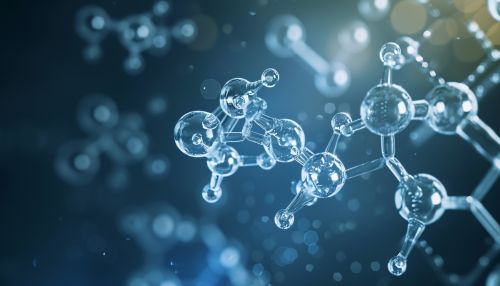Carbamic acid
Introduction
Carbamic acid is an organic compound that is the monoamide of carbonic acid. It is a simple molecule that is not stable in normal conditions, decomposing to ammonia and carbon dioxide. Despite its instability, it plays a significant role in the biological and chemical world.
Structure and Properties
Carbamic acid is composed of a carbonyl (C=O) group and an amino (NH2) group. The molecule is planar and polar due to the presence of the carbonyl group. The carbonyl oxygen is more electronegative than the carbon atom, creating a dipole moment. The amino group, being less electronegative than the carbonyl group, does not contribute significantly to the overall polarity of the molecule.


The carbonyl group in carbamic acid can form hydrogen bonds with water, making it somewhat soluble in water. However, it is less soluble than many other small organic molecules due to the presence of the nonpolar amino group.
Synthesis
Carbamic acid can be synthesized in a laboratory setting through the reaction of ammonia with carbon dioxide. This reaction is exothermic and releases heat. However, the product, carbamic acid, is unstable and quickly decomposes back into ammonia and carbon dioxide. This makes the isolation of pure carbamic acid challenging.
Role in Biological Systems
Despite its instability, carbamic acid plays a crucial role in biological systems. It is an intermediate in the urea cycle, a metabolic pathway that occurs in the liver. The urea cycle is responsible for the conversion of toxic ammonia into urea, which can be safely excreted by the body.
In the urea cycle, carbamic acid is formed from the reaction of ammonia with carbon dioxide, catalyzed by the enzyme carbamoyl phosphate synthetase. The carbamic acid is then converted into carbamoyl phosphate, which enters the urea cycle.
Role in Chemical Reactions
Carbamic acid also plays a role in chemical reactions, particularly in the formation of carbamates. Carbamates are a group of compounds that have a carbamate functional group (-NHCOO-), which is derived from carbamic acid. Carbamates are used in a variety of applications, including as pesticides, pharmaceuticals, and plasticizers.
The formation of carbamates involves the reaction of an alcohol with carbamic acid, resulting in the formation of a carbamate and the release of water. This reaction is typically catalyzed by an acid or base.
Stability and Decomposition
As mentioned earlier, carbamic acid is unstable and decomposes quickly into ammonia and carbon dioxide. This decomposition is a first-order reaction, meaning that the rate of decomposition is proportional to the concentration of carbamic acid.
The decomposition of carbamic acid can be catalyzed by both acids and bases. In acidic conditions, the protonation of the carbonyl oxygen leads to the formation of a more stable carbocation, which then decomposes into ammonia and carbon dioxide. In basic conditions, the deprotonation of the amino group leads to the formation of a less stable carbanion, which also decomposes into ammonia and carbon dioxide.
